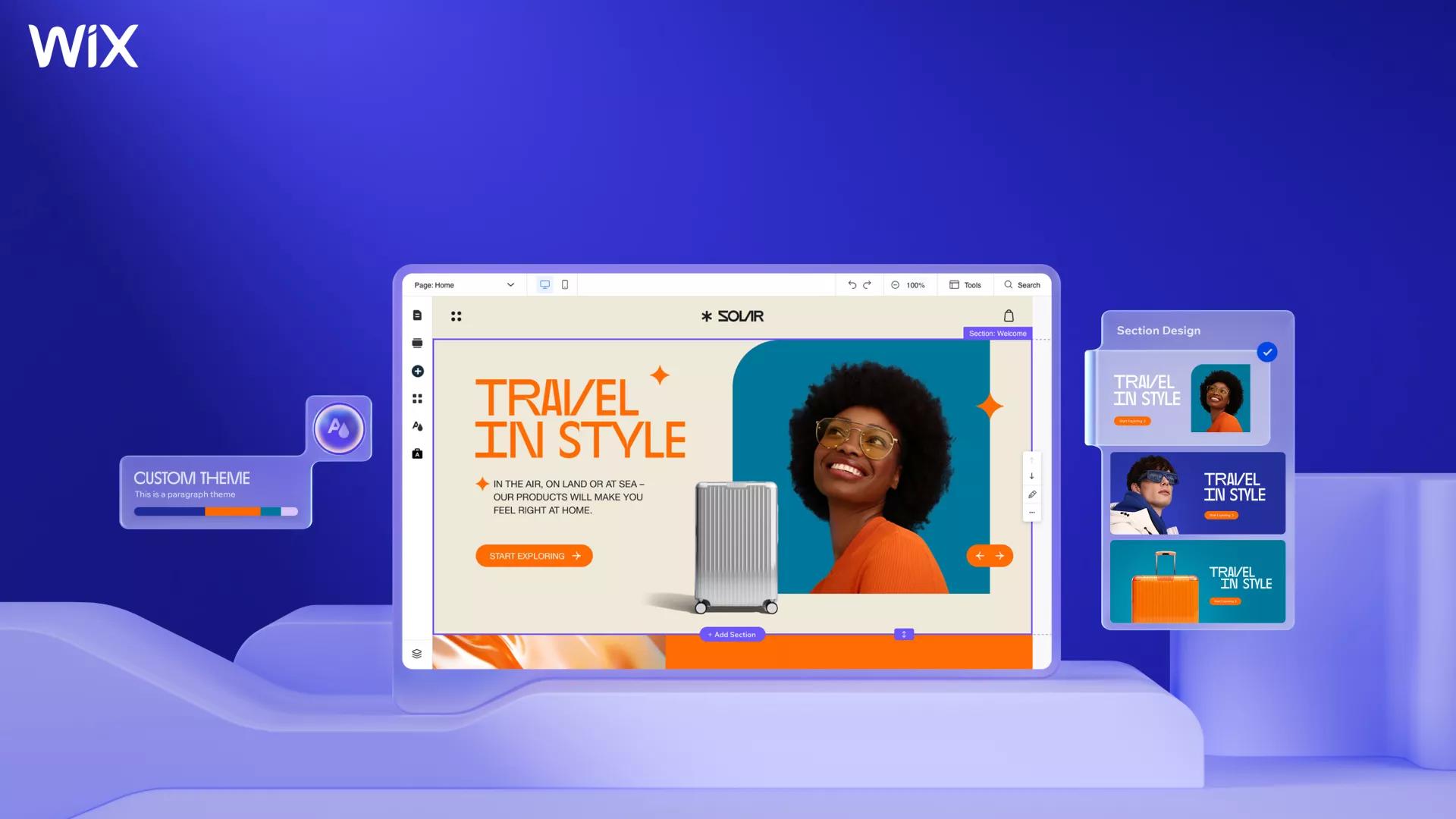
Wix ADI (Artificial Design Intelligence): Complete Buyer's Guide
Conversational AI website builder that generates functional business websites in under 10 minutes through chat-based interactions.
Wix ADI positions itself as the rapid deployment solution in the AI landing page builder market, fundamentally differentiating from competitors through its conversational design approach rather than predictive optimization capabilities[40][44]. The platform enables users to describe business goals through chat-based interactions, which the system uses to automatically select appropriate templates and generate functional websites within minutes[40][41].
Market Position & Maturity
Market Standing
Wix ADI operates within Wix's established market presence as a publicly traded company with significant market capitalization and operational scale, providing strong vendor stability indicators compared to emerging AI startups in the landing page builder space[41][45].
Company Maturity
The platform benefits from Wix's broader ecosystem maturity while occupying a specific segment focused on rapid deployment rather than enterprise optimization capabilities.
Industry Recognition
Industry recognition remains limited compared to competitors receiving analyst attention for AI innovation, with ADI positioned more as a user-friendly tool than a cutting-edge AI solution[46][54].
Strategic Partnerships
Strategic partnerships operate primarily within Wix's ecosystem rather than demonstrating extensive third-party integrations or enterprise relationships characteristic of competitors targeting sophisticated marketing operations[42][45].
Longevity Assessment
Long-term viability benefits from Wix's corporate stability and established market presence, though ADI's specific future development remains unclear given limited innovation evidence compared to competitors' active AI advancement programs[54][55].
Proof of Capabilities
Customer Evidence
Customer Implementation Evidence demonstrates successful deployment across multiple SMB scenarios, with documented cases including service businesses, freelancers, and local providers achieving functional websites within single-week timelines[41][51].
Quantified Outcomes
Deployment Speed Validation shows consistent achievement of rapid implementation timelines, with customer evidence supporting vendor claims of sub-10-minute generation and single-week deployment across multiple implementation scenarios[40][41][51].
Case Study Analysis
The bakery owner case study provides specific validation of AI-suggested layout effectiveness for basic business needs, though highlighting customization limitations for complex requirements like checkout functionality[51].
Market Validation
Market Adoption Patterns reveal primary success among SMBs, particularly service businesses and freelancers seeking immediate online presence without technical dependencies[41][51].
Competitive Wins
Competitive Displacement Evidence remains limited, with most customer adoption appearing to represent new website creation rather than migration from competing AI landing page builders.
Reference Customers
Reference Customer Validation includes documented service business implementations and freelancer success cases, though enterprise reference customers remain limited due to scalability constraints requiring escalation beyond ADI's core capabilities[51][54][55].
AI Technology
Wix ADI's core technology centers on conversational AI processing that interprets business descriptions through chat-based interactions to recommend layouts and content automatically[40][44].
Architecture
The platform's template-driven architecture processes conversational input to select from Wix's template library rather than generating fully custom designs through advanced machine learning[44][51].
Primary Competitors
Primary Competitive Landscape positions Wix ADI against Unbounce's Smart Traffic optimization, HubSpot's CRM-integrated personalization, and Instapage's enterprise governance capabilities[44][51].
Competitive Advantages
Competitive Advantages include superior deployment speed with sub-10-minute generation times, zero-coding accessibility for non-technical users, and intuitive conversational interface that eliminates technical barriers[40][41][44].
Market Positioning
Market Differentiation centers on template-driven approach with conversational input versus competitors' dynamic optimization strategies, creating fundamental differences in technical architecture and use case alignment[44][51].
Win/Loss Scenarios
Win/Loss Scenarios favor Wix ADI when deployment speed outweighs optimization needs, when budget constraints prioritize entry-level pricing, and when template-driven design meets business requirements without extensive customization[43][44][51].
Key Features

Pros & Cons
Use Cases
Integrations
Pricing
Featured In Articles
Comprehensive analysis of AI Landing Page Builders for AI Marketing & Advertising for AI Marketing & Advertising professionals. Expert evaluation of features, pricing, and implementation.
How We Researched This Guide
About This Guide: This comprehensive analysis is based on extensive competitive intelligence and real-world implementation data from leading AI vendors. StayModern updates this guide quarterly to reflect market developments and vendor performance changes.
56+ verified sources per analysis including official documentation, customer reviews, analyst reports, and industry publications.
- • Vendor documentation & whitepapers
- • Customer testimonials & case studies
- • Third-party analyst assessments
- • Industry benchmarking reports
Standardized assessment framework across 8 key dimensions for objective comparison.
- • Technology capabilities & architecture
- • Market position & customer evidence
- • Implementation experience & support
- • Pricing value & competitive position
Research is refreshed every 90 days to capture market changes and new vendor capabilities.
- • New product releases & features
- • Market positioning changes
- • Customer feedback integration
- • Competitive landscape shifts
Every claim is source-linked with direct citations to original materials for verification.
- • Clickable citation links
- • Original source attribution
- • Date stamps for currency
- • Quality score validation
Analysis follows systematic research protocols with consistent evaluation frameworks.
- • Standardized assessment criteria
- • Multi-source verification process
- • Consistent evaluation methodology
- • Quality assurance protocols
Buyer-focused analysis with transparent methodology and factual accuracy commitment.
- • Objective comparative analysis
- • Transparent research methodology
- • Factual accuracy commitment
- • Continuous quality improvement
Quality Commitment: If you find any inaccuracies in our analysis on this page, please contact us at research@staymodern.ai. We're committed to maintaining the highest standards of research integrity and will investigate and correct any issues promptly.